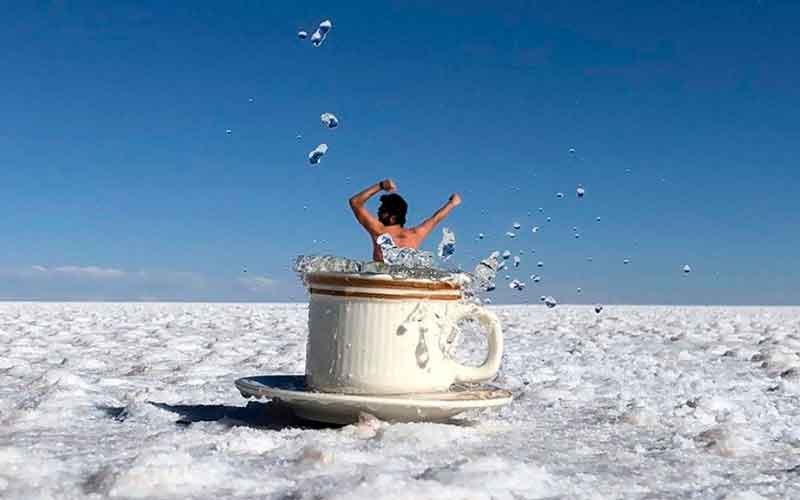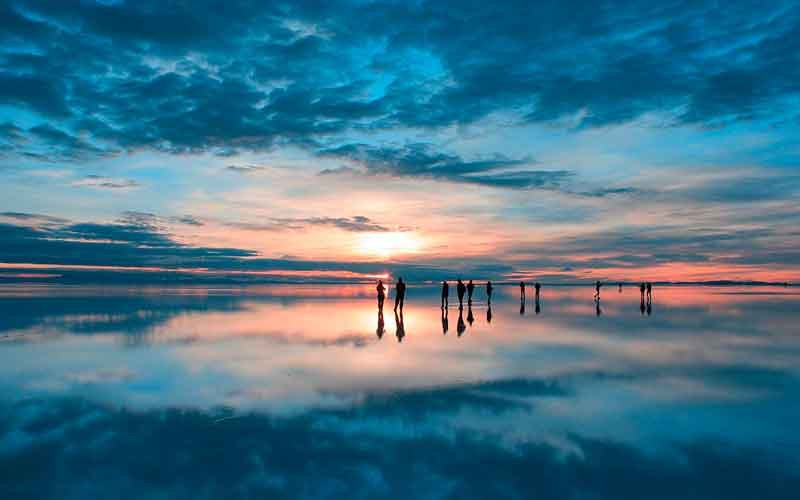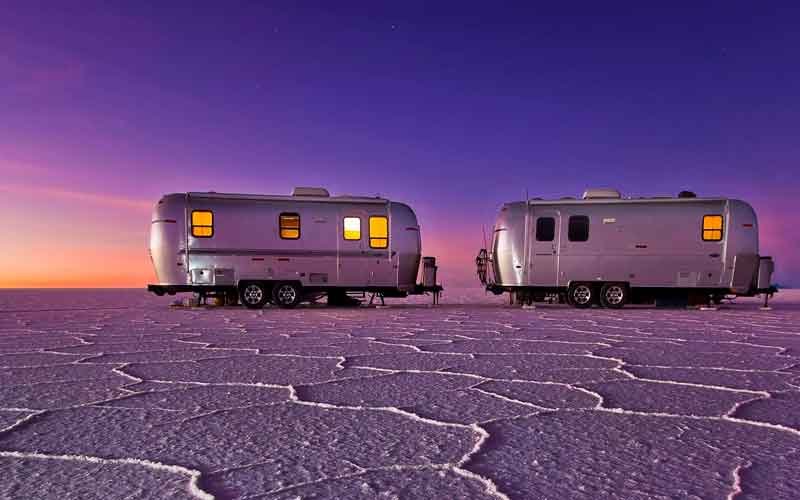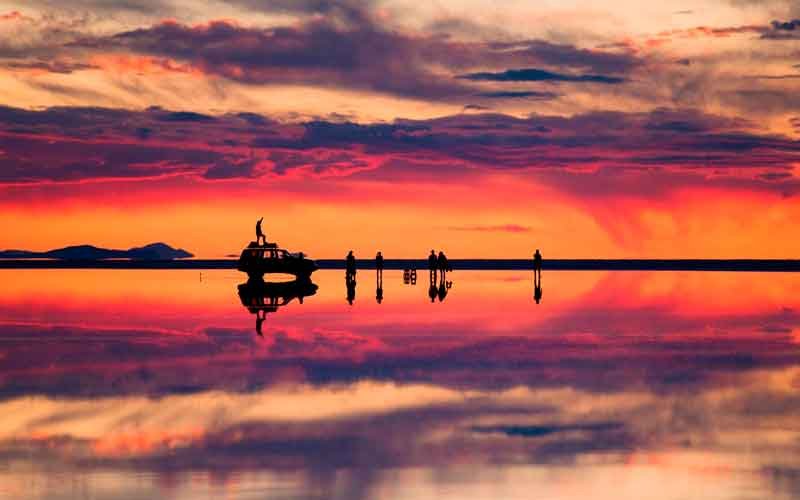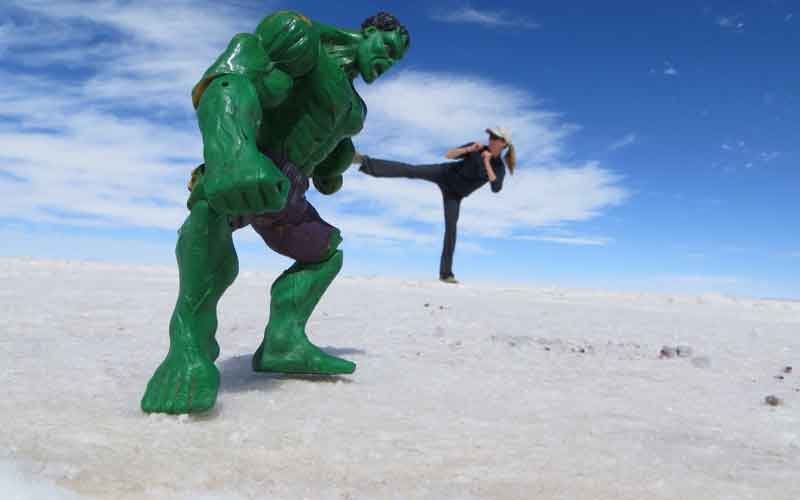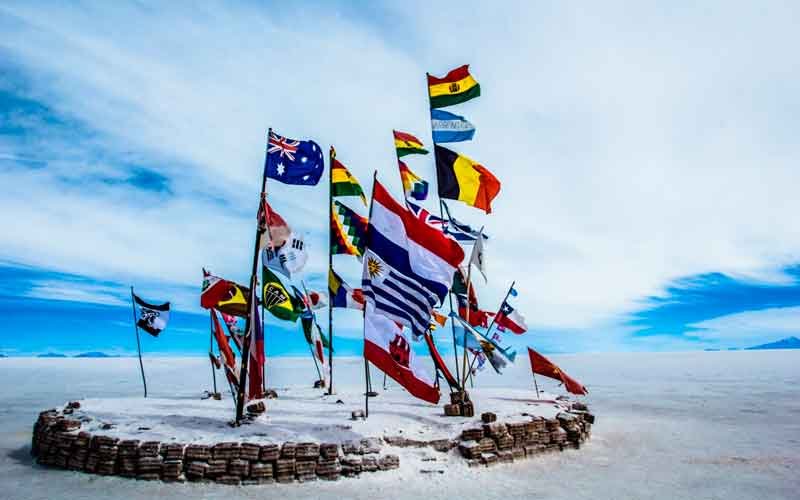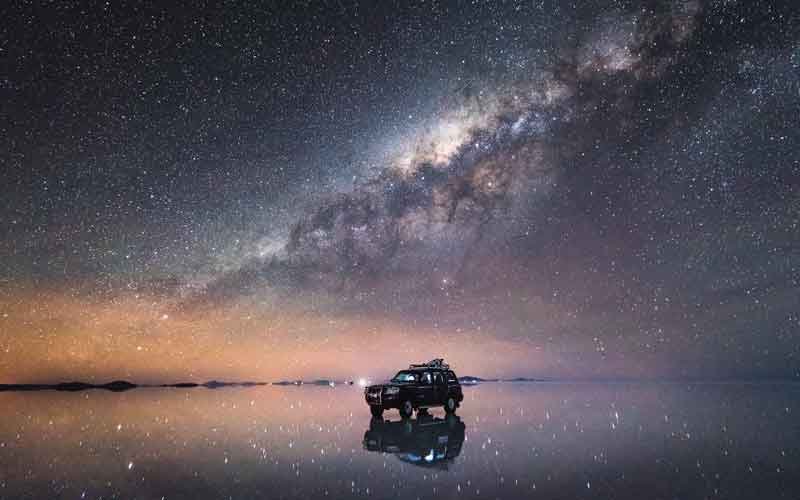Uyuni Salt Flats Tour 3 Days / 2 Nights from Uyuni
Description
🏜️ Overview
Embark on one of the most impressive trips in South America with this 3-day, 2-night tour to the Uyuni Salt Flats. A journey that combines unreal landscapes, the culture of the Altiplano, and the immensity of the largest salt flat in the world. From the city of Uyuni, the tour will take you to discover unique natural settings: the Train Cemetery, the town of Colchani, the salt flats, the majestic Incahuasi Island with its giant cacti, and one of the most beautiful sunsets imaginable.
During the following days, the route continues to the Southern Altiplano, where you will visit the Cañapa, Hedionda, and Colorada lagoons, the natural habitat of thousands of pink flamingos. You’ll marvel at the Sol de Mañana geysers, the Polques hot springs, the Dalí Desert, and the mystical Licancabur volcano, which marks the border with Chile.
Along the route, you’ll enjoy local hospitality in rustic accommodations (one of them built entirely with salt) and taste traditional dishes prepared by Bolivian hands. Each day offers unique opportunities to capture memorable photographs, gaze at the stars under clear skies, and experience the magic of the Altiplano at over 3,600 meters above sea level.
This tour is perfect for those seeking adventure, nature, and authenticity, combining extreme landscapes with moments of tranquility, culture, and connection with Pachamama.
Itinerary
📍 Itinerary
Uyuni – Train Cemetery – Colchani – Uyuni Salt Flats – Incahuasi Island – Sunset – Overnight in San Juan or Coquesa
The experience begins with pickup from your hotel in Uyuni. We first head to the Train Cemetery, an iconic stop where rusty locomotives that were once part of Bolivia’s mining boom rest. Here, you can capture artistic photographs among these gigantic abandoned steel structures.
We continue to the town of Colchani, the gateway to the salt flats. Here, you can observe the artisanal salt process, visit small museums, and purchase salt crafts, as well as llama and alpaca textiles.
As we enter the Salar de Uyuni, the landscape changes dramatically: an endless white plain surrounds us. We visit the famous “Eyes of the Salt Flat” (groundwater springs) and the mounds of salt collected by local families.
We stop at the Playa Blanca Salt Hotel, the world’s first hotel built entirely of salt, now a museum. Then, we head to the Bosque de Banderas and the Dakar Monument.
Lunch is served in the middle of the salt flat, with a 360-degree panoramic view. Afterward, we explore the famous Incahuasi Island, an oasis of volcanic rock filled with giant cacti that can reach over 10 meters in height. From its summit, the view of the salt flat is breathtaking.
Finally, we head to either the northern or southern part of the salt flat to watch the sunset reflected on the white surface (during the rainy season, the mirror effect can be observed). We spend the night in a rustic accommodation in the village of San Juan or Coquesa, near the Tunupa volcano.
Chiguana Desert – Ollagüe Volcano – Altiplano Lagoons – Siloli Desert – Stone Tree – Laguna Colorada
- After breakfast, we head to the Chiguana Desert, a semi-desert region with railway remains, where the still-active Ollagüe Volcano dominates the horizon. From a natural viewpoint, its constant gas emissions can be appreciated.
- We enter the Eduardo Avaroa Andean Fauna National Reserve, a protected area rich in wildlife. We visit several lagoons in the Altiplano: Laguna Cañapa, Laguna Hedionda, Laguna Honda, and Laguna Chiarkota, where Andean, Chilean, and James’s flamingos feed in their brackish waters.
- We continue through the Siloli Desert, home to the enigmatic “Stone Tree,” a geological formation eroded by the winds of the Altiplano.
- We close the day at Laguna Colorada, famous for its intense reddish color due to the pigmentation of algae and microorganisms. Large colonies of flamingos also live here. We spend the night in a basic shelter in the Huayllajara area.
Sol de Mañana Geysers – Polques Hot Springs – Dalí Desert – Laguna Verde
Very early, we depart for the Sol de Mañana Geysers, where steam and fumaroles emanate from boiling mud pools. The contrast with the sunrise light is simply spectacular.
Next, we arrive at the Polques Hot Springs, natural hot springs ideal for a relaxing soak surrounded by volcanic landscapes.
We continue to the Salvador Dalí Desert, named for its surreal landscapes reminiscent of the Spanish artist’s paintings. We then arrive at the base of the Licancabur Volcano, where the Laguna Verde and Laguna Blanca are located, whose hues vary depending on the sunlight and the minerals present.
Afterwards, we begin our return to Uyuni. Along the way, we pass through the Valley of the Rocks, the town of Villa Mar, San Cristóbal (famous for its colonial church, removed stone by stone), and finally arrive in Uyuni.
Includes
✅ What’s included in the tour?
Pickup from your hotel in Uyuni: We’ll pick you up directly from your accommodation in downtown Uyuni for a hassle-free start to your adventure.
Transportation by 4×4 vehicle (maximum 6 people per vehicle): Travel comfortably in a specially equipped all-terrain jeep to explore the landscapes of the Bolivian Altiplano, with space for luggage and photo stops at the best viewpoints.
Professional driver-guide in Spanish: Accompanied by an expert guide who shares information about the history, geography, and culture of the region, ensuring a safe and enriching experience.
2 nights’ accommodation:
- 1 night in a salt lodge, built with blocks of salt from the Salar, a unique and unforgettable experience.
- 1 night in a basic lodge, located near Laguna Colorada or Laguna Hedionda, surrounded by stunning natural landscapes.
Full meals during the tour:
2 nutritious breakfasts, ideal for starting your day with energy.
3 varied lunches, with typical Bolivian dishes and light options.
2 hot dinners, prepared by the lodge staff, perfect for recharging your batteries after a day of exploring.
Basic first aid kit: The vehicle has a small first aid kit for minor emergencies or common altitude ailments.
Assistance throughout the tour: Our team is attentive to any needs or problems that may arise during the trip.
Permits and logistical coordination: All entry requirements and permits to visit the nature reserves are arranged in advance, so you can focus on enjoying yourself.
Photography experience at the Salar de Uyuni: Equipment for classic perspective and reflection photos is included, especially during the rainy season (January to March).
Not included
❌ What’s not included?
Entrance to the Mummy Cemetery: Access to this archaeological site has an additional cost, payable directly at the entrance (approx. 10-15 Bs).
Tips (optional): Tips for the guide, driver, or accommodation staff are not included. A voluntary contribution is recommended as a thank you for their service.
Medical or Travel Insurance: Insurance is not included. It is recommended to purchase international insurance that covers accidents, medical emergencies, and altitude evacuation.
Bottled Water and Personal Snacks: A full meal is provided during the tour, but it is recommended to bring extra water, energy snacks, or nuts for longer tours.
Hot Showers at Some Lodges: Some lodges located in remote areas of the mountains offer hot showers for an additional cost (approx. 10 Bs).
Entrance fees to parks or nature reserves (if applicable): Depending on the route chosen, entrance fees to sites such as the Eduardo Avaroa National Reserve or Incahuasi Island can be paid directly on-site.
Personal expenses: Purchase of souvenirs, alcoholic beverages, or any expenses not specified in the itinerary.
Recommendations
🧭 Travel recommendations
Bring a passport or ID: This is essential for checking into accommodations and at checkpoints along the route. If traveling from abroad, make sure you have a valid passport.
Cash in Bolivians: There are not always ATMs or internet access along the route, so it is recommended to bring enough cash for entrance fees, tips, or personal expenses.
Warm clothing for cold nights: Temperatures can drop below 0°C in the mountains, especially in winter (June to August). Bring a thermal jacket, gloves, a hat, and a scarf.
Comfortable clothing for the day: During the day, the weather is sunny, so it is recommended to wear light clothing, sunglasses, sunscreen, and a cap or hat to protect yourself from UV rays.
Water bottle, toilet paper, and personal snacks: Although a full meal is included, it is recommended to bring extra water, energy bars, or nuts for long hikes.
Camera with spare batteries: The Salar de Uyuni offers unique landscapes and ideal conditions for spectacular photographs, especially at sunrise or during the rainy season. Don’t forget spare batteries, as some accommodations do not have continuous power.
Brightly colored clothing: Ideal for taking creative photos on the salt flat, where the contrast of the white or mirrored background stands out even more with red, blue, or yellow clothing.
Towel and sandals: These are useful if you decide to enjoy the Polques hot springs or similar during the tour.
Additional personal items: Include moisturizer, lip balm, and eye drops, as the dryness of the high plateau can affect the skin and mucous membranes.
Respect the natural environment: Do not leave trash, extract salt, or alter the landscape. The Salar and its surroundings are fragile ecosystems that deserve care and respect.
Frequently Asked Questions
❓ Frequently Asked Questions (FAQ)
What is the best time to visit the Salar de Uyuni?
The dry season (May to October) allows you to explore the entire salt flat and its surroundings. The rainy season (January to March) offers the famous mirror effect, although some places may be inaccessible.
What type of accommodation is offered?
The accommodations are rustic and simple, with shared or private rooms depending on availability. The first night is usually in a salt lodge and the second in an Andean refuge.
Are there bathrooms and showers available?
The accommodations have bathrooms, but hot water is not always available. Showers in some refuges have an additional cost.
Is this tour suitable for children?
Yes, but it is not recommended for children under 5 years old due to the altitude and weather conditions.
What is the maximum altitude during the tour?
The highest point is approximately 5,000 meters above sea level. In the area of the geysers and the Licancabur volcano.


